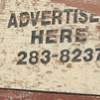comScore Study Questions Value of Clicks
October 9, 2009 by Alice Allan · Leave a Comment

Digital marketing research company comScore has released updated findings that show US Internet users are much less likely to click on display ads than they were two years ago.
Read more
realbird.com Offers New Ads with iPromote
August 24, 2009 by Alice Allan · Leave a Comment

Real estate technology provider realbird.com has partnered with display advertising provider iPromote to allow users to convert their realbird.com websites into banner advertisements. Through the partnership, these banner advertisements will be distributed through networks such as MSN, AOL, Yahoo! and Facebook.
Read more
Display Advertising Options
No doubt some of you have found yourself locked in a meeting with an advertising agency wondering what language they were speaking. You thought you were there to talk about how to get your face on the internet and generate more business and what you were faced with was “pixels, .gifs, skyscrapers and megabytes”. You’re a professional and don’t want to look silly, so you nod knowingly and hope to goodness you get what you paid for!
Read more
Effective Banner Advertising - Part 2
Once you’ve thought about what you want to advertise and you’ve created an eye-catching banner that best represents it, where and how do you place the ad to get the best response?
Banner advertising is a really effective means of promoting estate agent’s services, especially when used on portal websites. ‘Advertise where the people are looking’ is exactly what’s at play in this scenario. The ad becomes even more effective when placed at a granular rather than generic level such as the home page. Placing banners on the search results pages of neighbourhoods where you operate is a key way to attract potential buyers and sellers in your market. Your message should speak directly to the people looking for property in your area and should resonate loudly with those looking to sell. So how do you get your ads up there?
There’s 3 ways of posting banner ads on a site:
- Work with other advertisers in an ‘exchange program’ where you agree to display their ad on your site if they display yours;
- Pay a publisher site directly to display your ad; and
- Pay an organisation, usually a banner network, to display the banner on a number of publisher’s sites.
These three arrangements take many forms and will suit particular advertisers at different times. If you don’t have a whole lot of money to launch a traditional ad campaign you may opt for the ‘Exchange’ idea. You might choose to form your own network of sites with whom you share a particular affinity (perhaps location) and then agree to swap banner ads. This can be a very effective and cheap way of advertising to a localised market - perfect for real estate agents trying to win listings.
If you want to get your ad out there on a lot of sites and for little money you might join a formal Exchange Program. Typically you’ll be asked to post 2 ads on your site for every 1 ad of yours placed elsewhere in the network. This option can get you great coverage for no money but you do give up a lot of control over exactly where your ad is displayed. Most programs will say they try and match advertisers to sites intelligently but occasionally advertisers are unhappy with where their banners end up.
If you’re happy to pay to have your banner published, you can either approach the particular website you’re interested in directly, or you may employ an advertising agenct to handle it for you. If you have a very niche product you may like to go direct to a website to get a better deal. You will typically buy an advertising package on a CPM basis - paying per thousand impressions. This is how most property portals operate their banner advertising packages for member agents.
If you use an agency, they will do most of the work for you and offer many advantages to doing it yourself. From creating the banner to selecting the appropriate sites and negotiating the best price and position for your ad, they will usually get a better deal than you can by yourself because they buy impressions in bulk. One drawback though is that agencies often only deal with accounts of particular size, so if you are a small business you may need to shop around to find an appropriate agency to work with.
Paying a banner ad network is a great way to get your ad onto multiple sites quickly without having to spend time negotiating with each publisher. A banner ad network is basically a broker between the advertiser and the publisher and takes care of all the placement and tracking of your ads; they either work on an impression basis (such as ) or on click-throughs (such as BannerSpace). As with banner exchange programs however, the advertiser relinquishes control over where the ad is placed.
Having great banner creative with a clear message is very important, but it’s no good if noone sees it. Targeted placement is imperative to your banner advertising achieving success. If you wish to place banner ads on a portal website you should contact the site directly and find out about their advertising packages.
Effective Banner Advertising - Part 1
If you’ve spent any time surfing the net you’re bound to have come across a multitude of advertisements. There’s tickers and pop-ups and links, but no doubt you’ve noticed the most prevalent of them all, banners. Banners are one of the most popular forms of internet advertising, and advertising is one of the main sources of revenue for a website. So as a business owner, how can you best play your part in this revenue stream?
Banners are small rectangular ads that appear on all different sorts of websites and contain endless messages, but all have the same basic function - to get users to click on them so they are transported to the advertiser’s website. They are a fantastic way of promoting your business or product/service to a targeted audience and are a comparatively cheap form of advertising to add to your mix. So how do you use banners effectively to promote your services?
First let’s look first at the different types of banner ads and what makes a good one.
The Internet Advertising Bureau (IAB) has produced universal Ad Unit Guidelines for marketers, agencies and media companies, for use in planning and creating internet ads. The IAB has stipulated 8 banner ad sizes, the most common of which is 468×60 pixels and looks like this:
![]()
There is no universal file-size constraint however most sites will ask advertisers to keep the ads quite small, say about 18k, because they add to the time it takes a user to load a page and therfore should not be too large. It is wise to ensure you stay within the designated limits when producing your ad so browsers aren’t turned off before they even see your message.
The content of banner ads varies enormously depending on what you’re advertising and where the ad is placed. You may choose to have a simple static ad with limited graphics or you may use an animated .gif which means there’ll be some movement in your ad via the use of a succession of images or text. The most fancy banner ads of all are the rich media ads which use very creative graphic and may contain video, audio or specialist programming. These ads will have larger file sizes and may contain interaction beyond a simple click-through.
Whilst banner ads are not difficult to construct, there are some key factors that your designer should take into account. The difference between a good (and effective) ad and a bad one can be subtle and sometimes difficult to pinpoint, but here are some basic guidelines to consider:
- Use simple messages rather than long complicated ones
- Advertise one product or service - not your entire business - and have the ad link through to the relevant page on your website
- Animation and movement attract attention better than static ads
- Your graphics should be interesting and suggestive but not too obscure
- Keep file size small
- Place the ad on a page with relevant content so you are more likely to reach your target audience
Before you get too excited about having the fanciest ad on the web, you need to ensure you have a clear objective laid out for your advertising. Just as in newspaper or radio advertising, you need to be clear of the message you want to convey and the success factors you’ll use to measure the effectiveness of the ad.
Typically you’ll want your ad to achieve Click-throughs and Brand Awareness. Publishers hope that the user will click-through to their website and ultimately buy the product/service on offer. A click-through means the banner ad has delivered the advertiser a visitor that they may otherwise not have had and is a truly measurable success factor. Brand Awareness, where a visitor recalls the brand down the track and possibly makes a decision to purchase then, is harder to measure but is still considered a sucess factor.
Whilst there are several ways a banner ad can be successful, the typical measures advertisers will look at are:
- Page Views (Page Impressions) - this is how many times a particular page is called from the server which is important to advertisers who place a banner on that page because it indicates how many visitors have possibly seen their ad. This is a measure of exposure rather than brand awareness and is a typical way of selling ad space - cost per thousand impressions, or CPM.
- Click-throughs - the number of people who click on the ad linking through to the advertiser’s website. Ad space is often sold on a cost per click (CPC) basis.
- Click-through rate (CTR) - this is the ratio of page views to clicks and is expressed as the percentage of total visitors to a page who clicked on the ad. CTR is often very low, say 1-2%.
- Cost per sale - how much advertising money is spent on making one sale. This calculation will vary depending on the type of service or product.
Obviously different measures are more important than others to different advertisers, but all of these elements should be considered at some point in the ad buying and measurement process. They will affect the price that you pay for the ad space and will be the process by which you can evaluate your advertising campaign and possibly tweak it for better success.
So now you have a great ad and know how to measure its success, where are you going to put it and how? Read part 2 of Effective Banner Advertising for more information.








